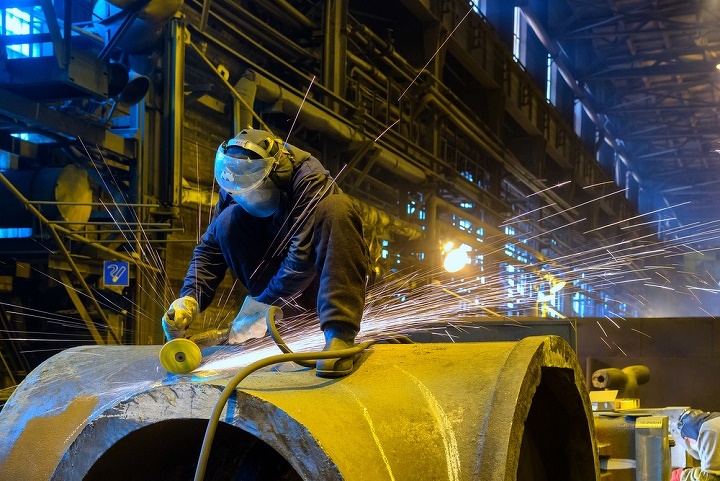Where US Manufacturing Jobs Really Went

But it is wrong to suggest that all was well in manufacturing before 1999. Manufacturing jobs were being destroyed in those earlier decades, too. But the lost jobs in one region and sector were generally being replaced – in absolute terms, if not as a share of the labor force – by new jobs in another region or sector.
Consider the career of my grandfather, William Walcott Lord, who was born in New England early in the twentieth century. In 1933, his Lord Brothers Shoe Company in Brockton, Massachusetts, was facing imminent bankruptcy. So he relocated his operations to South Paris, Maine, where wages were lower.

Trump’s Strongman Weakness
US President Donald Trump has made his affinity for authoritarian leaders a... →
The Brockton workers were devastated by this move, and by the widespread destruction of relatively high-paying blue-collar factory jobs across Southern New England. But in the aggregate statistics, their loss was offset by a bonanza for the rural workers of South Paris, who went from slaving away in near-subsistence agriculture to holding a seemingly steady job in a shoe factory.
The South Paris workers’ good fortune lasted for just 14 years. After World War II, the Lord brothers feared that depression could return, so they liquidated their enterprise and split up. One of the three brothers moved to York, Maine; another moved to Boston. My grandfather went to Lakeland, Florida – halfway between Tampa Bay and Orlando – where he speculated in real estate and pursued non-residential construction.
Again, the aggregate statistics didn’t change much. There were fewer workers making boots and shoes, but more workers manufacturing chemicals, constructing buildings, and operating the turnkey at the Wellman-Lord Construction Company’s Florida-based phosphate-processing plants and other factories. In terms of domestic employment, the Wellman-Lord Construction Company had the same net factor impact as Lord Brothers in Brockton. The workers were different people in different places, but their level of education and training was the same.
So, during the supposedly stable post-war period, manufacturing (and construction) jobs actually moved en masse from the Northeast and Midwest to the Sun Belt. Those job losses were as painful for New Englanders and Midwesterners then as the more recent job losses are for workers today.

The Limits of Economic Optimism
As the annual spring meetings of the World Bank and the International Monet... →
During the 2000s, American blue-collar jobs were churned more than they were destroyed. Until 2006, the number of manufacturing jobs decreased while construction jobs increased. And in 2006 and 2007, losses of residential construction jobs were offset by an increase in blue-collar jobs supporting business investment and exports. It was not until the post-2008 Great Recession that blue-collar jobs began to be lost more than churned.
Because there is always some degree of churn, a more accurate perspective on what has happened is gained by looking at blue-collar jobs as a share of total employment, rather than at the absolute number of manufacturing workers at any given time. In fact, there was an extremely large and powerful long-run decline in the share of manufacturing jobs between World War II and now. This gives the lie to the meme that manufacturing was stable for a long time, and then suddenly collapsed when China started making gains.
In 1943, 38% of America’s nonfarm labor force was in manufacturing, owing to high demand for bombs and tanks at the time. After the war, the normal share of nonfarm workers in manufacturing was around 30%.
Had the US been a normal post-war industrial powerhouse like Germany or Japan, technological innovation would have brought that share down from 30% to around 12%. Instead, it has declined to 8.6%. Much of the decline, to 9.2%, is attributable to dysfunctional macroeconomic policies, which, since Ronald Reagan’s presidency, have turned the US into a savings-deficit country, rather than a savings-surplus country.

The Risks to America’s Booming Economy
After a long and slow recovery from the recession that began a decade ago, ... →
As a rich country, the US should be financing industrialization and development around the world, so that emerging countries can purchase US manufacturing exports. Instead, the US has assumed various unproductive roles, becoming the world’s money launderer, political-risk insurer, and money-holder of last resort. For developing countries, large dollar assets mean never having to call for a lifeline from the International Monetary Fund.
The rest of the decline in the share of manufacturing jobs, from 9.2% to 8.6%, stems from changing trade patterns, primarily owing to the rise of China. The North American Free Trade Agreement, contrary to what US President Donald Trump has claimed, contributed almost nothing to manufacturing’s decline. In fact, all of those “bad trade deals” have helped other sectors of the American economy make substantial gains; and as those sectors have grown, the share of jobs in manufacturing has fallen by only 0.1%.
In this era of fake news, astroturf social movements, and misleading anecdotes, it is imperative for anyone who cares about our collective future to get the numbers right, and to get the right numbers into the public sphere. As the Republican Party’s first president, Abraham Lincoln, put it in his “House Divided” speech, “If we could first know where we are, and whither we are tending, we could then better judge what to do and how to do it.”
Copyright Project Syndicate ©

